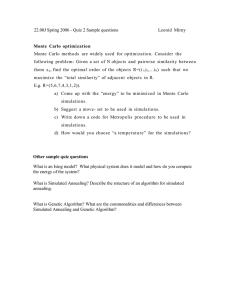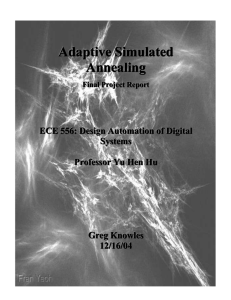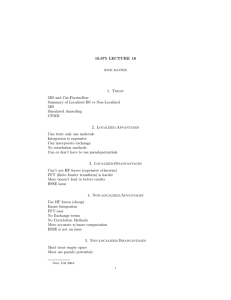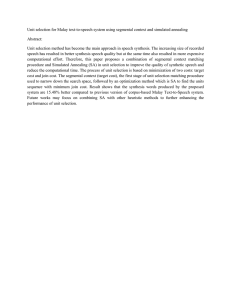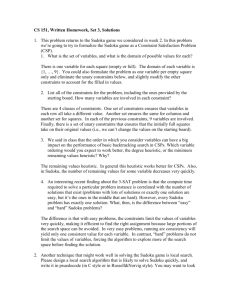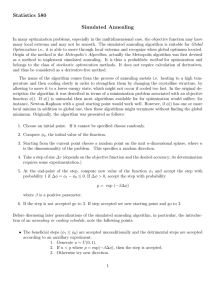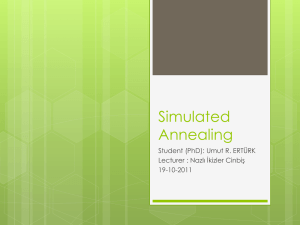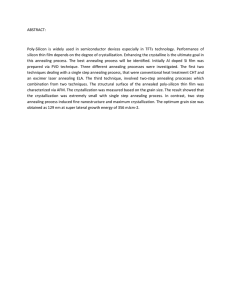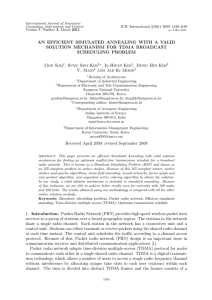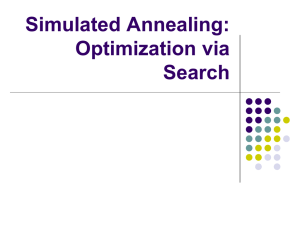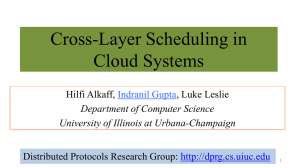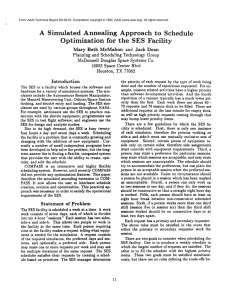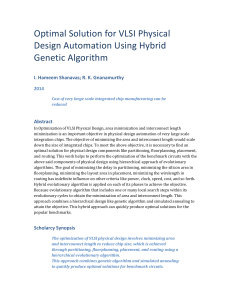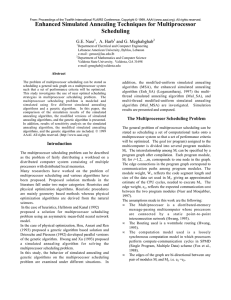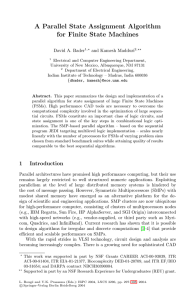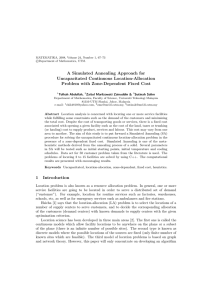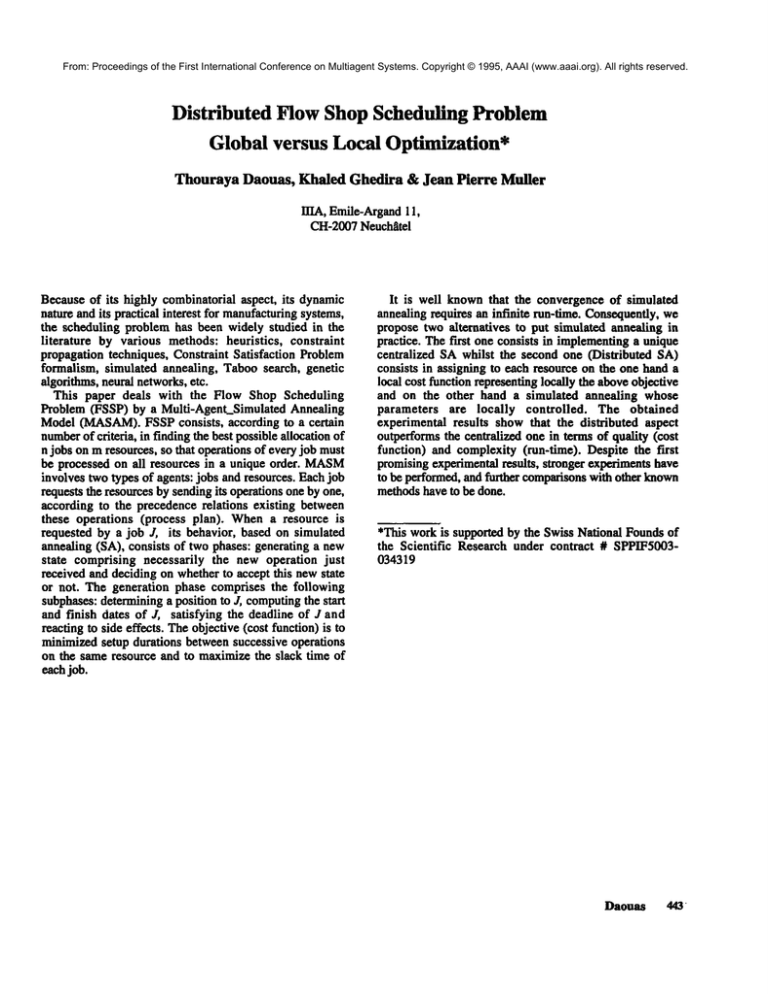
From: Proceedings of the First International Conference on Multiagent Systems. Copyright © 1995, AAAI (www.aaai.org). All rights reserved.
Distributed Flow Shop Scheduling Problem
Global versus Local Optimization*
Thouraya Daonas, Khaled Ghedira & Jean Pierre Muller
IIIA, Emile-Argand11,
CH-2007Heuch~ltel
Because of its highly combinatorial aspect, its dynamic
nature and its practical interest for manufacturingsystems,
the scheduling problem has been widely studied in the
literature by various methods: heuristics, constraint
propagation techniques, Constraint Satisfaction Problem
formalism, simulated annealing, Taboo search, genetic
algorithms, neural networks, etc.
This paper deals with the Flow Shop Scheduling
Problem (FSSF) by a Multi-Agent_Simulated Annealing
Model (MASAM).FSSP consists, according to a certain
numberof criteria, in finding the best possible allocation of
n jobs on m resources, so that operations of every job must
be processed on all resources in a unique order. MASM
involves two types of agents: jobs and resources. Each job
requests the resources by sending its operations one by one,
according to the precedence relations existing between
these operations (process plan). Whena resource
requested by a job J, its behavior, based on simulated
annealing (SA), consists of two phases: generating a new
state comprising necessarily the new operation just
received and deciding on whether to accept this new state
or not. The generation phase comprises the following
subphases: determining a position to J, computingthe start
and finish dates of J, satisfying the deadline of J and
reacting to side effects. The objective (cost function) is
minimized setup durations between successive operations
on the same resource and to maximize the slack time of
each job.
It is well knownthat the convergence of simulated
annealing requires an infinite run-time. Consequently, we
propose two alternatives to put simulated annealing in
practice. The first one consists in implementinga unique
centralized SA whilst the second one (Distributed SA)
consists in assigning to each resource on the one hand a
local cost function representing locally the aboveobjective
and on the other hand a simulated annealing whose
parameters are locally controlled.
The obtained
experimental results show that the distributed aspect
outperforms the centralized one in terms of quality (cost
function) and complexity (run-time). Despite the first
promising experimental results, stronger experiments have
to be performed, and further comparisonswith other known
methodshave to be done.
*This work is supported by the Swiss National Founds of
the Scientific Research under contract # SPPIFS003034319
Daouns
443


